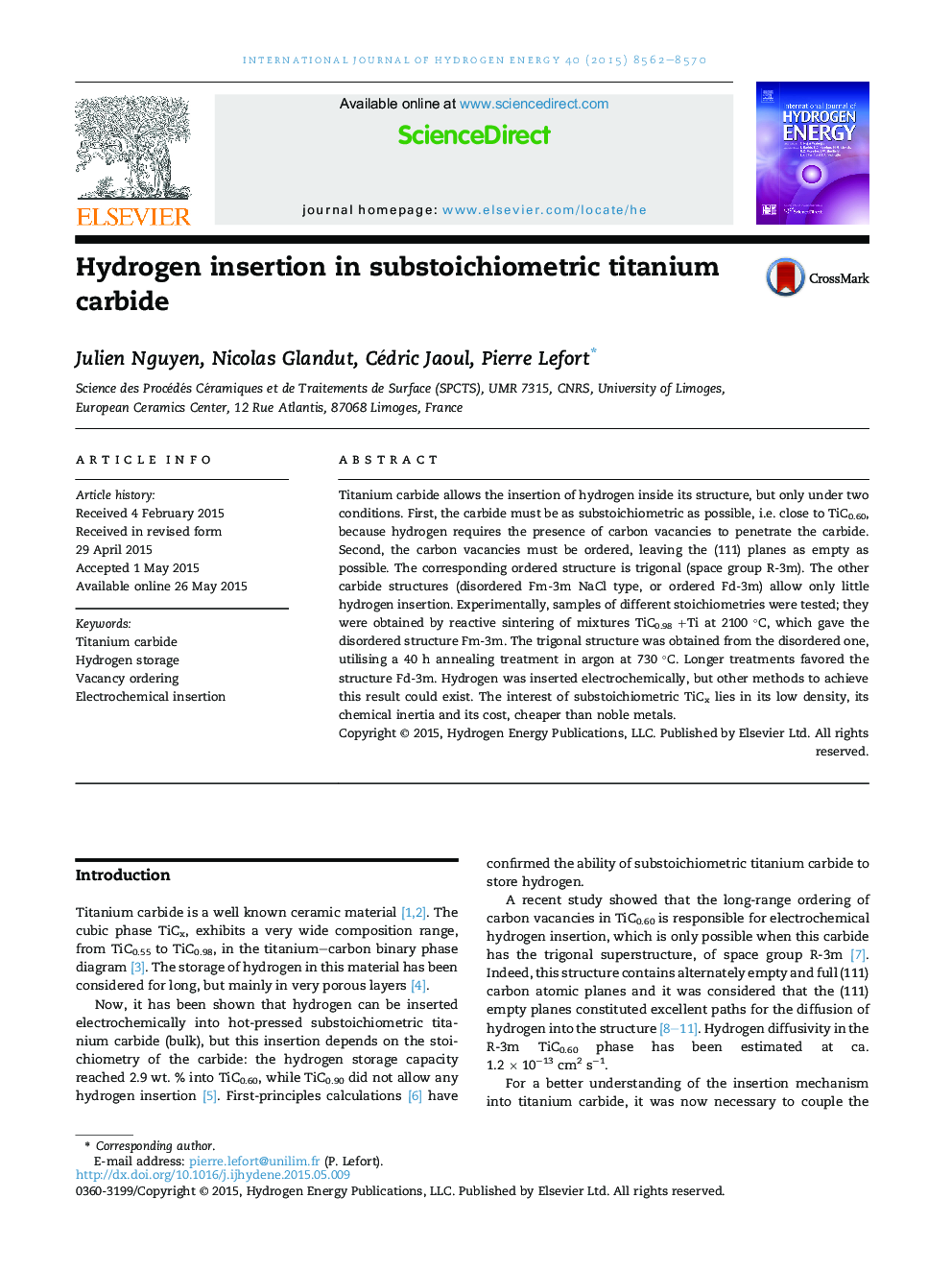| کد مقاله | کد نشریه | سال انتشار | مقاله انگلیسی | نسخه تمام متن |
|---|---|---|---|---|
| 1269526 | 1497446 | 2015 | 9 صفحه PDF | دانلود رایگان |
• TiCx carbide allows easy and quantitative electrochemical hydrogen insertion.
• Hydrogen insertion is only possible when TiCx has a trigonal crystal structure.
• The empty planes (111) of the trigonal structure are diffusion paths for hydrogen.
• Hydrogen insertion in TiCx is favored by low carbon content (0.55 < x < 0.65).
Titanium carbide allows the insertion of hydrogen inside its structure, but only under two conditions. First, the carbide must be as substoichiometric as possible, i.e. close to TiC0.60, because hydrogen requires the presence of carbon vacancies to penetrate the carbide. Second, the carbon vacancies must be ordered, leaving the (111) planes as empty as possible. The corresponding ordered structure is trigonal (space group R-3m). The other carbide structures (disordered Fm-3m NaCl type, or ordered Fd-3m) allow only little hydrogen insertion. Experimentally, samples of different stoichiometries were tested; they were obtained by reactive sintering of mixtures TiC0.98 +Ti at 2100 °C, which gave the disordered structure Fm-3m. The trigonal structure was obtained from the disordered one, utilising a 40 h annealing treatment in argon at 730 °C. Longer treatments favored the structure Fd-3m. Hydrogen was inserted electrochemically, but other methods to achieve this result could exist. The interest of substoichiometric TiCx lies in its low density, its chemical inertia and its cost, cheaper than noble metals.
Figure optionsDownload as PowerPoint slide
Journal: International Journal of Hydrogen Energy - Volume 40, Issue 27, 20 July 2015, Pages 8562–8570
